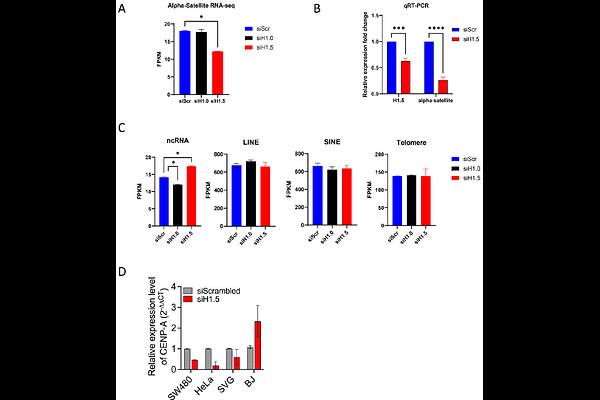Linker Histone H1.5 Contributes to Centromere Integrity in Human Cells

Linker Histone H1.5 Contributes to Centromere Integrity in Human Cells
Saha, A.; Bui, M.; Melters, D. P.; Ganesan, A. K.; Baek, S.; Bentahar, R. S.; Dalal, Y.
AbstractMammalian H1 linker histones comprise a group of 11 non-allelic variants which have key roles in modulating chromatin. H1 variant specific genomic distribution contributes to fine tuning regulation of gene expression and chromatin architecture. Contradictory reports on the presence and role of H1 histones at centromeres led us to further investigate whether H1s impact centromeric chromatin. In this study, we focused on H1.5 and by in vitro assays we showed that H1.5 directly interacts with centromeric-protein A (CENP-A) mononucleosomes. Notably, our in vitro findings revealed that H1 variants H1.0 and H1.2 can also bind CENP-A nucleosomes, although with differing affinities and signatures, asserting centromeric localization may not be unique to H1.5. In human cells, H1.5 localized to the centromere and chromatin immuno-precipitation revealed an interaction between H1.5 with CENP-A nucleosomes. Knocking down of H1.5 resulted in the loss of centromeric -satellite transcription, reduction in loading of new CENP-A, and the accumulation of mitotic defects. These data point to an unreported role for histone H1 in the regulation of mitotic integrity in human cells.